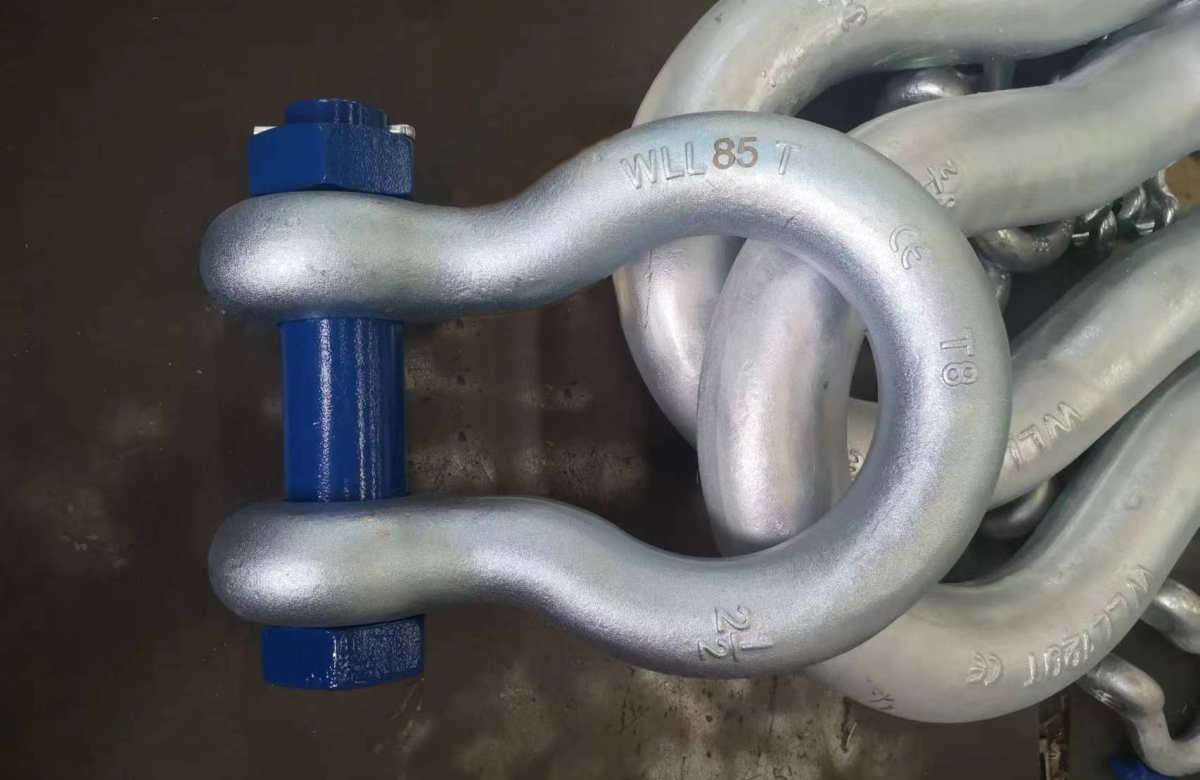Maintenance Of Shackles
2024-10-11
Inspection
(1) Any place where the shackle body and pin have cracks visible to the naked eye should be scrapped immediately.
(2) When magnetic particle inspection and ultrasonic inspection have cracks, they should be scrapped immediately.
(3) When the deformation of the shackle body reaches 10% of the original size and the pin cannot be rotated due to deformation, it should be scrapped immediately.
(4) Any section of the shackle body and pin should be scrapped immediately when the wear exceeds 10% of the nominal size.
(5) Pin thread bad or slip wire, should be scrapped immediately.
(6) When the shackle body and pin have large-scale corrosion or rust, they should be scrapped immediately.

Thorough examination
A thorough examination should be carried out by a competent person at intervals not exceeding six months. The inspection interval should be less where deemed necessary taking into consideration:
(1)local-, national-, or branch-specific regulation.
(2)the service condition of the shackle.
(3)eventual use in demanding environments (e.g. corrosive or extreme temperature).
(4)eventual use where the shackle is subjected to repeated loads that may induce metal fatigue.
Records of such examinations should be maintained.
Prior to the examination the Shackle should be cleaned so it is free from oil, dirt and rust. Any cleaning method which does not damage the parent metal is acceptable. Methods to avoid are those using acids, overheating, removal of metal or movement of metal which may cover cracks or surface defects.
Repair
Repairs must only be done by a competent person who has the knowledge and technical skills. The shackle shall only be returned to service after approval by a designated person.
Records of repairs should be maintained.
Any replacement component or part of the chain sling should be in accordance with the appropriate Standard for that component or part.
Components that are cracked, visibly distorted or twisted, severely corroded or have deposits which cannot be removed should be discarded and replaced.
Minor damage such as nicks and gouges may be removed by careful grinding or filing. The surface should blend smoothly into the adjacent material without abrupt change of section. The complete removal of the damage should not reduce the thickness of the section at that point to less than the manufacturer’s specified minimum dimensions or by more than 10 % of nominal thickness of the section.



